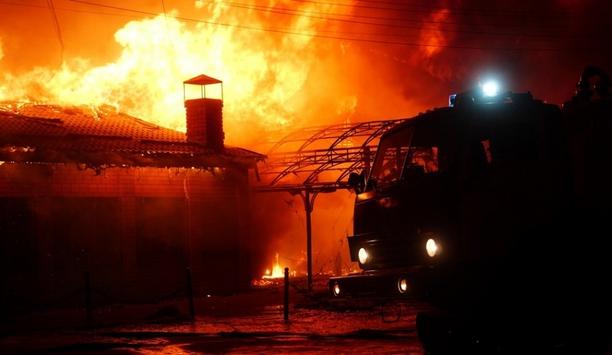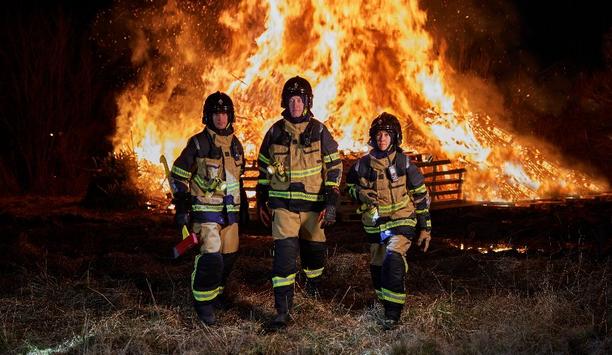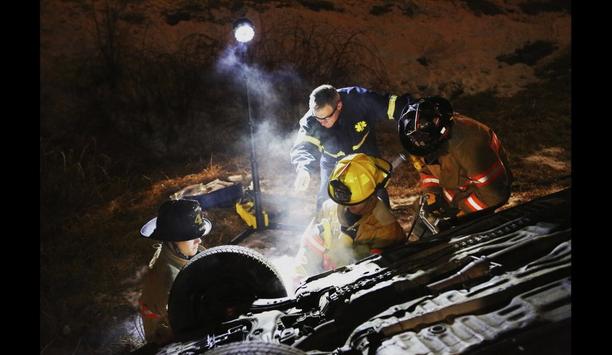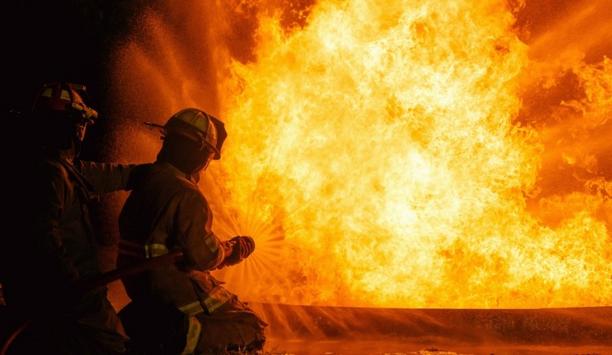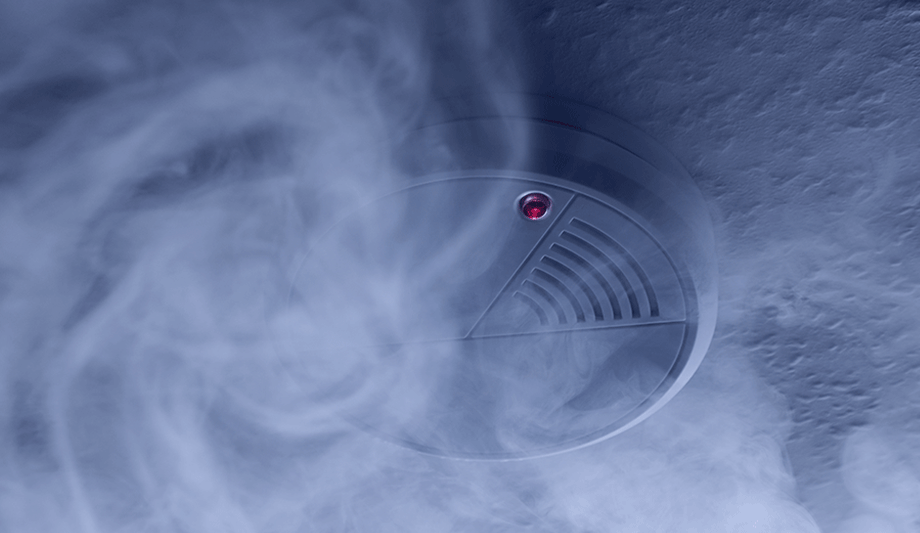National Fallen Firefighters Foundation (NFFF) - Experts & Thought Leaders
Latest National Fallen Firefighters Foundation (NFFF) news & announcements
The National Fallen Firefighters Foundation (NFFF) and W.S. Darley & Co. (Darley) are thrilled to announce the winners of the 2024 Thought Leadership Essay Competition, a platform that celebrates the fire service's forward-thinking leaders. Founded by Congress in 1992, the National Fallen Firefighters Foundation (NFFF) honors fallen firefighters and supports their families, providing resources, counseling, and educational assistance. NFFF also collaborates on initiatives to prevent firefighter fatalities and injuries nationwide. adaptability, inclusivity, and resilience The theme, 'Overcoming Resistance to Change in the Fire Service', inspired 85 innovative essays The theme, 'Overcoming Resistance to Change in the Fire Service', inspired 85 innovative essays from fire service members nationwide, offering solutions to drive adaptability, inclusivity, and resilience. Jamie Howarth, Battalion Chief of Anne Arundel County Fire Department, earned first place with a thought-provoking essay on fostering inclusivity and securing organizational buy-in, while Chris Paskett, Battalion Chief of Eugene Springfield Fire Department, and retired Fire Chief Chris Truty of Tri-Lakes Monument Fire Protection District rounded out the top three winners, each recognized for their contributions to enhancing fire service leadership. rising voices in the fire service "Supporting and uplifting the rising voices in the fire service is central to our mission at Darley," said Paul Darley, CEO of Darley, adding "We’re proud to collaborate with NFFF and contribute to this writing platform that inspires innovation and empowers leaders to shape the future fire service." The competition, sponsored by Darley in partnership with the NFFF, allowed participants to voice solutions that spark dialog and build a more adaptable, progressive fire service. supporting the essay project "The National Fallen Firefighters Foundation is honored to team up with Darley to support the essay project. The essays demonstrate the high caliber of firefighters serving our communities who stand ready to drive progress and put great ideas into action," said Victor Stagnaro, CEO of the NFFF. The competition, sponsored by Darley in partnership with the NFFF, allowed participants to voice solutions that spark dialog and build a more adaptable, progressive fire service. winners Winners were awarded monetary prizes, with Jamie Howarth also invited to present her essay at the Texas A&M Leadership Conference in January 2024. As the program continues to grow, NFFF and Darley invite fire service members to participate in 2025's competition, contributing to a platform that cultivates leadership and encourages impactful change across the industry.
On Friday, August 23, 2024, Jesse Love, driver of the No. 2 Whelen Chevrolet Camaro, took to the Daytona International Speedway with a mission greater than crossing the finish line first. His car carried the names of 226 fallen firefighters, representing Whelen’s partnership with Richard Childress Racing (RCR) and the National Fallen Firefighters Foundation (NFFF). This year marked the third consecutive season of this important partnership and is a testament to their shared commitment to supporting first responders and their families. The striking red and black paint scheme on the No. 2 car, first unveiled at FDIC International in April 2024, was a powerful tribute to the firefighters who have sacrificed their lives in service of others. Supporting first responders Each name on the car represented a story of bravery and sacrifice, making every lap at Daytona a moving tribute “I got emotional when we unveiled this car a few months ago,” said Jesse Love of his experience at FDIC, adding “Having folks come up and talk about their family members brought the magnitude of the cause to the forefront. It’s an honor to run not only the NFFF colors but also the names of 226 individuals who died protecting our communities.” Each name on the car represented a story of bravery and sacrifice, making every lap at Daytona a moving tribute. NFFF CEO - Victor Stagnaro expressed gratitude for the gesture, saying, “Remembering these heroes means so much to our Fire Hero Families, and it’s a true demonstration of Whelen’s commitment to honoring our fallen heroes and supporting their families.” Tribute to fallen firefighters As Love raced, he not only represented Whelen, RCR, and NFFF, but also the spirit of every firefighter whose name was featured on his car. While the race was filled with thrilling moments, the deeper significance of this tribute stood out. They hope the legacy of those 226 fallen firefighters will continue to inspire, reminding us of the selfless sacrifices the first responders make every day.
Whelen Engineering is excited to announce the launch of its annual Everyday Champion Program for 2024. The program is officially open for nominations beginning June 3, 2024, and will remain open until September 6, 2024. Everyday Champion program Whelen’s Everyday Champion program celebrates and recognizes outstanding emergency service departments, individuals, or groups by honoring demonstrations of bravery and courage during an act of exceptional valor or tireless efforts to make a community a better or safer place to live. Past recipients have included police officers, firefighters, a multidisciplinary paramedicine team, and a tow truck driver who made a daring rescue while returning from a call. Sandy Voss Voss, who was nominated by her granddaughter, is a member of her local volunteer fire department Whelen’s 2023 Everyday Champion was Sandy Voss of Clinton, Connecticut. Voss, who was nominated by her granddaughter, is a member of her local volunteer fire department and, for nearly forty years, has been a dedicated community service organizer, committing countless hours and resources to fundraising and outreach events. public safety “We always look forward to the launch of the Everyday Champion program each year as it perfectly aligns with our mission to support and protect those who protect others,” says Whelen CEO, Geoff Marsh. He adds, “It allows us to acknowledge and appreciate the profound impact these individuals and teams have on our communities through their unwavering commitment to public safety and the greater good.” Everyday Champion winners Everyday Champion winners are honored in a special ceremony and receive an award of distinction in the Whelen Hall of Champions, an exhibit in the NASCAR Hall of Fame in Charlotte, North Carolina. To learn more about the Everyday Champion program or nominate someone for recognition visit the website. Nominations will be open from June 3, 2024, through September 6, 2024. reliable products and technology From warning lights to white illumination, sirens, controllers, and software, every product that bears the Whelen name For more than 70 years, Whelen Engineering has been a proud ally and supporter of the nation’s first responders. Driven by a mission to protect those who protect others, Whelen provides high-quality, reliable products and technology needed to aid them in their critical missions. From warning lights to white illumination, sirens, controllers, and software, every product that bears the Whelen name has been thoughtfully designed, manufactured, and tested right here in America to perform at the highest level in any condition. emergency warning The Whelen team is honored to have earned the trust of first responders around the world as pioneers of the emergency warning industry. It carries that responsibility earnestly, always striving to ensure that the everyday heroes serving under the illumination and protection of Whelen products are equipped to do their jobs with enhanced efficiency, reliability, and safety. Whelen is a steadfast supporter of organizations dedicated to honoring first responders like the National Fallen Firefighters Foundation and is a corporate partner of the National Law Enforcement Officer Memorial Fund.
Insights & Opinions from thought leaders at National Fallen Firefighters Foundation (NFFF)
Two grant programs designed to address staffing, equipment, training, and health and safety needs of firefighters are scheduled to ‘sunset’ in 2024 unless Congress reauthorizes the grant programs, and funding for the programs will run out unless Congress endows them for another year. Legislation to extend the programs has already passed the U.S. Senate. The Staffing for Adequate Fire and Emergency Response (SAFER) grant program provides funding to hire additional personnel to maintain safe staffing levels in fire departments. The Assistance to Firefighters Grant (AFG) program pays for equipment, training and other fire department needs. Together, they ensure the readiness of 30,000 fire departments across the U.S. to respond to more than 30 million emergency calls annually. Introducing bipartisan legislation U.S. Senator Gary Peters, Chairman of the Homeland Security and Governmental Affairs Committee, introduced bipartisan legislation to reauthorize SAFER and AFG programs, and to provide funding for the United States Fire Administration (USFA). Other authors of the bipartisan legislation are Republican Senators Susan Collins of Maine and Lisa Murkowski of Alaska; and Democratic Senator Tom Carper of Delaware in addition to Democrat Peters. The bill was approved by the Senate Homeland Security Committee and then moved to the full Senate Current authorization of funding for all three programs expires in 2023. The bill was approved by the Senate Homeland Security Committee and then moved to the full Senate for consideration. The Senate approved the bill on April 20. Senate Majority Leader Chuck Schumer earlier pledged to pass the Fire Grants and Safety Act of 2023 in the Senate to save the programs. In addition to reauthorizing the programs for another year, the bill extends the sunset from 2024 to 2030. Federal grant programs The bill also extends through 2030 the underlying formula for the authorizations of appropriations for the grant programs; those amounts are calculated by adjusting the amount authorized for 2013 ($750 million) each year to account for inflation. In November 2022, Michigan Congressman Dan Kildee announced legislation in the House to renew the two federal grant programs critical to local departments. The Fire Grant and Safety Act would extend the grants until 2030. The Department of Homeland Security (DHS) Federal Emergency Management Agency (FEMA) is responsible for the implementation and administration of the grant programs through the Grant Programs Directorate. Modern pumper truck Outfitting one firefighter with protective gear and breathing apparatus can cost $12,000 “These federal grant programs have delivered millions of dollars to departments and municipalities to [provide] the equipment and staffing levels [needed] to respond to fires and countless other emergency calls as safely and efficiently as possible,” said Sam Fresina, President of the New York State Professional Firefighters Association. Fire departments often face budget shortfalls and high costs that prevent them from investing in modern equipment to combat emergencies and keep firefighters safe. For example, a modern pumper truck can cost more than $750,000. Outfitting one firefighter with protective gear and breathing apparatus can cost $12,000. Providing recruitment incentives “Volunteer and combination fire and EMS departments struggle to get the funding they need to keep the lights on, fuel the ambulance, and purchase turnout gear,” said National Volunteer Fire Council Chair Steve Hirsch. “The AFG and SAFER programs are critical to these departments because they allow them to purchase needed equipment and provide recruitment incentives to volunteers to serve their community.” Other organizations supporting reauthorization of the grant programs and extension of the ‘sunset’ include the International Association of Fire Chiefs (IAFC), the Congressional Fire Services Institute (CFSI), the National Fallen Firefighters Foundation, the International Society of Fire Service Instructors, the International Association of Fire Fighters (IAFF), and the National Fire Protection Association (NFPA).
Among the ways, garments protect firefighters is by reducing the heat stress and discomfort created by the need to carry heavy gear. Making the garments more comfortable to wear means less physical stress. Garments also help to protect firefighters from the toxic elements in the fire environment. The extent to which plastic materials can generate toxic smoke when they burn has previously been ignored but is now better understood. Concerted effort to understand end user As a manufacturer of fibers used in firefighting garments, DuPont makes a concerted effort to understand the end user of their products; that is, the firefighter. They seek to keep the firefighter safer and to extend the time available to do his or her job safely. DuPont works with fabric and garment manufacturers to focus on minimizing the impact of the toxic environment. Firefighter’s awareness Multiple initiatives seek to make firefighters more aware of potential dangers and best practices Awareness by firefighters of the negative impact of toxic materials has increased substantially. Multiple initiatives seek to make firefighters more aware of potential dangers and best practices to avoid exposure to contamination. Organizations promoting greater awareness include firefighters’ unions, the International Association of Fire Chiefs (IAFC), and the National Fallen Firefighters Association. Toxic smoke For example, testing confirms that toxic smoke often affects firefighters in the neck and jaw area, where sweat promotes absorption of smoke particles. A woven hood or baklava avoids the absorption, reflected in the NFPA Standard 1971, which makes particulate protection hoods mandatory. The Nomex Nano Flex hood increases the comfort of the gear. Avoiding toxic materials also includes no inclusion of per-and poly-fluoroalkyl substances (PFAs) in garment materials themselves. Standards and Specifications Testing is an area of focus for DuPont, which has the capabilities to test the layered structures firefighters are wearing. One tool is the Thermo-Man, a fully instrumented mannequin that tests the likely burn injuries of flash-over fires. DuPont works with the NFPA, ISO, EN, and other standards committees to develop testing and certified standards to ensure the performance of firefighter garments. Fire gear is specified in each region according to a standard (minimum) performance. In many cases, garments out-perform the requirements. Other variables Other variables of firefighting garments include the fitting and weight Other variables of firefighting garments include the fitting and weight. A less expensive approach might yield a garment that sacrifices comfort. Geographic and climate differences matter, too. A firefighter in the North would prefer a different garment than in the South. Garments should be comfortable, lighter, and warmer in cold environments. On the topic of gender, garment makers offer female designs that are cut and shaped differently. Garment makers evaluate the weight of the assembly, how well it protects against the heat, and the comfort. DuPont works with garment makers to test various materials and how they perform in fire garments. The company works with firefighter consultants in the U.S. and Europe who help them understand the language of firefighters. Addressing Dangers of Toxic Materials Cleaning fire gear of toxic materials is a challenge related to garments. Toxic materials on fire gear returned to the fire station can also expose the station environment to danger. Changing logistics and processes are driving how gear is handled in the fire station environments. Some stations are designating black zones, gray zones, and white zones, depending on the level of contamination of the gear in those areas. Washing and drying More frequent washing of bulky, heavy gear helps to circumvent the impact of toxic materials, but repeated washing and drying can cause mechanical stress and resulting damage to a garment. DuPont collaborates with weaving mills and garment makers to develop fabrics and garments that stand up well to frequent washing.Toxic smoke particles and mandatory use of hoods on firefighters is translating into more washing. As time goes on, the washing and decontamination process will likely become more professionalized with laundry companies stepping in to wash and handle the garments. Fire stations are not well suited to cleaning these garments. Nomex Nano fiber Nomex Nano Flex is a non-woven material that retains toxic and cancer-causing particles Developed to address the growing problem of heat stress, DuPont’s Nomex Nano fiber is engineered to be thinner than other advanced flame-resistant materials. Nomex Nano Flex was developed to help make products like firefighter hoods more protective against particles without compromising comfort. Nomex Nano Flex is a non-woven material that retains toxic and cancer-causing particles, and creates a particulate barrier. It also protects the firefighter from outside heat while cooling the firefighter by evacuating body heat. Higher evaporation rate Nomex Nano Flex has a higher evaporation rate. For the same thermal protection performance (TPP), it also has higher total heat loss (THL). Combining protection, thermal performance and toughness, Nomex Xtreme Performance is the highest performance category of solutions for flame-resistant personal protective apparel. Feedback from Firefighters “If we have a new innovation, or want to share our developments, we go proactively to fire departments to ask: Will this help you or not?” says Alfons N. Held, Global Market Leader, Emergency Response, DuPont Personal Protection. There is a difference between lab testing and what firefighters experience in the real world. Alfons N. Held adds, “We seek to understand what they need, and approach ‘lighthouse’ fire departments for guidance.” In any country or jurisdiction, there are fire departments – ‘lighthouse’ departments – that set the trends and work to evaluate the gear. If someone in Florida is using certain gear, it might also work in Texas or Arizona. The protection level Areas of continuing research in terms of firefighter garments include making them more wash-durable The question is: What protection level do we need? Given that level, departments seek to balance comfort with performance. Ironically, of the firefighters who die every year, some two-thirds of the deaths are attributable to overexertion, while less than 10% is linked to the fire/heat. Areas of continuing research in terms of firefighter garments include making them more wash-durable, more comfortable (with higher evaporation) and more lightweight. Complex systems Garments can be complex systems; heavy turnout gear is a five-layer garment with each layer contributing to performance – the outer shell, the inner liner, a moisture membrane, and one or two thermal liners. Sometimes attention is more focused on the outer layer of the gear with less awareness of the other layers and how the entire system works together. Importance of station wear In fact, protection of the firefighter starts at the skin, so station wear is important. “In our view, looking at all the layers on the skin and outwards is important,” says Alfons N. Held, adding “Firefighters wear various materials that are not always optimal.” For example, a cotton undergarment might get wet from sweat, stay wet and not evaporate. Environmental impact is another concern among garment-makers. Can the materials be reused or recycled? Some countries in Europe ask that manufacturers take back garments after they are used. New Garments, New Needs A special need is development of new garments that can perform at the wildland urban interface (WUI), where catastrophic wildland fires encroach on residential areas. Design of gear for wildland firefighting has been lighter and does not include breathing systems. When fires reach residential areas, gear needs change. Wildland firefighters are not equipped to enter a structure fire and do not have adequate protection against carcinogens. New gear designs are needed that address both environments.
Technology has transformed the role of lighting in the realm of firefighting. The rise of USB-rechargeable flashlights and headlamps now enable firefighters to recharge on-the-go. New, multi-fuel flashlight ‘systems’ use a rechargeable battery, but also can accept disposable batteries for alternate sources of power. New scene lights are waterproof and offer powerful brightness in situations involving smoke or water. Work lights that fit in tight spaces can be used hands-free or hanging, and rotate on their bodies for light wherever it’s needed. Whether for fighting fires, investigating fire scenes, signaling others in emergencies, or conducting rescues, Streamlight, a global provider of high-performance lighting, works to meet the needs of the fire market. Checking functionality of various LED beams Dawn Dalldorf-Jackson, Streamlight’s Director of Sales – Industrial and Fire/EMS Division, said “When determining how to meet lighting needs, fire agencies should take into account the functionality of various LED beams, such as spot beams for highlighting specific areas or flood beams for illuminating wide areas.” She says that lights mounted higher up – on the body, on a pole or a light tower configuration – can help reduce glare, enabling fire professionals to operate without light shining at eye level, possibly obscuring their vision. Portable Scene Light EXT Streamlight’s Portable Scene Light EXT, for example, features a pole and rotating head that extend 84 inches high Streamlight’s Portable Scene Light EXT, for example, features a pole and rotating head that extend 84 inches high. Another model uses a frame that can be stacked for up to three units, creating a bright light tower to further improve worker visibility. As a provider of high-performance lighting, Streamlight has a reputation for making tough, ultra-bright flashlights that serve the specialized needs of fire professionals. Advanced lighting technology The company’s advances in lighting technology have resulted in many specialized products for the fire market, such as the Survivor, a right-angle flashlight, portable scene lights, lanterns, such as the Vulcan 180 with blue taillights, so firefighters can be spotted in thick smoke, and versatile helmet lights. Dawn Dalldorf-Jackson said, “Choosing the right flashlight can make all the difference in combating dense smoke or other conditions.” Flexible helmet lights Flexible helmet lights like the Vantage 180 X USB can be mounted to full-brim fire helmets, or by means of a ‘quick release’ helmet bracket, detached for use as a handheld light, or hooked to turnout gear to become a 90-degree light. ‘Multi-fuel’ lights allow users to conveniently recharge a Streamlight SL-B26 Li-Ion USB rechargeable battery pack or switch to disposable batteries, when the need arises. Other lights feature both spot and flood beams that also can be used together to optimize navigation and eliminate blind spots. Dawn Dalldorf-Jackson adds, “Costs can be a concern and rechargeable lighting products can help provide the solution. While disposable flashlight batteries are cheaper, agencies should consider the number of personnel in their organization, and how many types of lighting products they use over their careers.” Rechargeable flashlights are tough and durable Lights with both spot and flood beams give users two lights in one, increasing the value of lighting purchases Rechargeable flashlights are tough and durable, feature extremely low operating costs, and offer convenient recharging options. Streamlight’s Li-Ion Bank charger, for example, can power eight SL-B26 USB rechargeable batteries at a time. Lights with both spot and flood beams give users two lights in one, increasing the value of lighting purchases. And versatile scene lights can be used in a variety of situations, from large-scale to confined space scenes. Informing on the latest technology innovations in lighting Spreading the word about the importance of light at a fire scene, Streamlight works directly with fire training facilities to educate them on the latest technology innovations in lighting, while also providing products for use in their training sessions. Streamlight also offers an extensive video showcase on its website, which offers product information and training information for fire personnel. Streamlight is a major sponsor of the National Fallen Firefighters Foundation (NFFF), helping to fund the organization’s National Memorial Weekend tribute to fallen heroes, scholarships for children of fallen firefighters, and counseling programs. The company donates a portion of its yearly sales of the specially marked NFFF Red Nano Light, NFFF Red Vantage Light and the NFFF 2AA Red Siege Lantern to the foundation.
The New Future For Fire Agencies
DownloadThe Eight Key Trends in Fire Detection in 2023
DownloadA Digital Platform to Improve Fire Safety Compliance and Inspections
DownloadOvercoming the Challenges of Fire Safety in the Paper Industry
DownloadCarbon Monoxide: Creeping Killer Caught In The Act
Download






